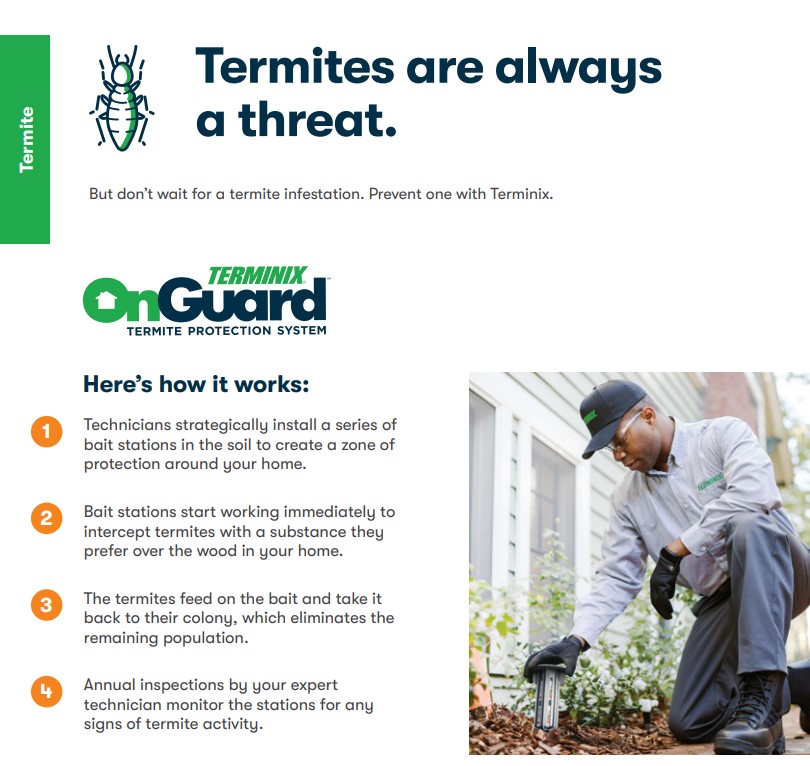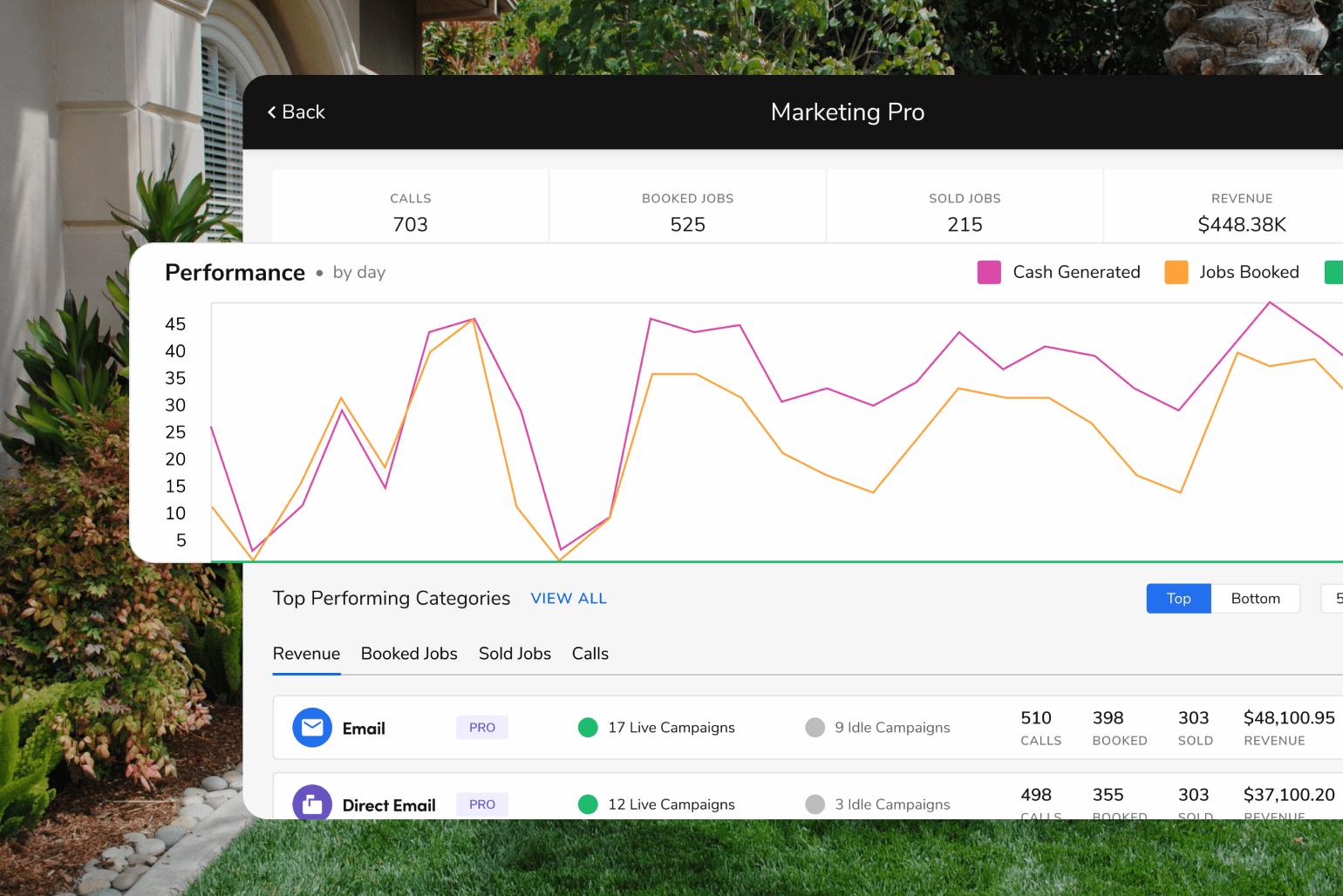Mastering Pest Control Email Marketing: Tips And Techniques

Mastering Pest Control Email Marketing: Tips And Techniques
In service-oriented sectors such as pest control, cultivating strong customer relationships is paramount. Companies leverage various marketing tools, with email marketing standing out as the best means of direct communication with clientele. Email facilitates communication and fosters a unique connection with customers that other channels, like social media and fliers, struggle to replicate.
By understanding the basics of pest control email marketing, you can reach your target audience, uncover new leads, and nurture them into loyal, paying customers. All it takes is:
Practicing good email list-building strategies
Properly segmenting your prospect and customer lists
Crafting the proper message for each audience
Testing email strategies and learning from the results
Email campaigns function as a powerful supplementary channel that complements and reinforces the impact of your broader promotional efforts––reinforcing key messages, nurturing engagement, and fostering a consistent brand presence across diverse online platforms. By incorporating email into your digital marketing arsenal, you create a multi-faceted approach that optimizes content amplification and strengthens the overall effectiveness of your marketing initiatives.
Build an Email List for Your Pest Control Business
Email marketing starts with building a subscriber list. Some popular list-building strategies include:
Lead magnets: Content or incentives customers access with their email address
Opt-in forms: Signup forms that capture new customers’ email addresses
Events: Meet people in person first, then nurture relationships with email
As for buying email lists––don’t.
Getting subscribers takes time, and lists promise a shortcut. But email marketing experts know better. The ROI is rarely good because the leads are low quality. On top of that, federal and state laws, from the CAN-SPAM Act to the California Consumer Privacy Act (CCPA), carry penalties as stiff as $50,000 per email.
Stick with trusted list-building strategies like the ones below, and you’ll net qualified leads and more customers interested in using your pest control services.
Create Lead Magnets
A lead magnet is typically helpful content customers receive in exchange for their email addresses. It’s also called gated content because it’s gated behind a download form or email signup. Lead magnets support lead generation by offering high-value pieces, such as:
eBooks: Use your unique knowledge to create an authoritative resource for a specific audience. Example: A pest control 101 guide for new homeowners.
White papers: Dive deep into a specific topic in a way that makes readers feel like an expert. Example: A guide to local insect safety organized by season that parents can print off and put on the fridge.
Webinars: Produce a webinar or reach out about joining others in the industry. You can collect emails twice, first on the live run and then on replays.
Below is a screenshot from Terminix’s home protection guide, a 13-page ebook sent to new email subscribers.

Image Source: Terminix
Incentives can also act as lead magnets. For instance, you might offer a free inspection or discount code to anyone who subscribes during National Pest Management Month.
Include Opt-in Forms on Your Website
Opt-in forms encourage readers to join your subscriber list by voluntarily sharing their email addresses. In effect, the customer gives you permission to market to them via email.
The opt-in form to download Terminix’s ebook includes a simple with a brief call-to-action (CTA). Compare that to the form below, which also asks for first name, last name, and how the customer heard about the exterminator.

Image Source: Arrow Exterminators
Get started by checking out the opt-in forms available to you. Most customer relationship management (CRM) and email platforms have some. Otherwise, check out free marketing services such as Google Forms or SurveyMonkey or pay options like ConvertKit or Mailchimp.
From there, distribute your opt-in form throughout your pest control website. Experiment with different placements, headings, and presentations, like seeing if a phone number field impacts sign-ups.
Add Social Media CTAs
Social media platforms such as Facebook, Twitter, and LinkedIn can all help build your email list. That’s especially true for pest control companies who consistently post blogs, videos, and other original content. Doing so turns your business into a destination for pest control content.
To get started with social media CTAs:
Regularly share quality content with a prominent call-to-action to sign up for your email list.
Share and promote the opt-in form. It can be as simple as a link straight to the form. Go bigger by creating a website landing page that outlines the benefits of subscribing, becoming, and increasing your SEO (search engine optimization) rankings.
Put a CTA in your social media bios. Use a simple CTA, such as “Join our email list,” then either hyperlink to your opt-in form or paste in a shortened URL.
Network
Industry events, online and off, allow you to use email marketing to meet potential customers in person and exchange information with them. Trade shows draw large crowds of potential customers to one place. On the other hand, local business events could lead to different kinds of business opportunities, like mosquito control for the city parks.
Events may be a bit more cumbersome when capturing emails through marketing automation. But the upside is the relationship begins on a more personal level, making the event lead more likely to become a customer.
Get started with a booth at a local consumer event, such as a home and garden show. Connect with your community by shaking hands at some local business events. Reach out to pest control industry sites you admire; it could lead to webinar or podcast appearances.
Segment Your Audience
Audience segmentation is dividing your email list into subcategories based on shared subscriber characteristics or your ideal target audience. Segmentation is foundational because it makes many other things possible, like targeted email marketing campaigns.
There are many ways to segment your email list, but the most common data to focus on includes:
Demographics: Age, gender, location, and similar data power many successful email marketing campaigns. For instance, your purchasing data may show homeowners older than 50 are much more likely to sign up for a service plan.
Behavior: Online behaviors such as purchase history, website activity, and social media engagement all signal where customers may be in their buying journeys. If someone downloads your ebook about bed bug-proofing their house, follow up in a day or so with an email highlighting your bed bug services.
Interest: Some homeowners need help eliminating roaches. Others struggle with spiders in the basement or raccoons in the attic. When you know your customer base’s problems, you know who to send your latest blog about rodent traps to and who might consider it spam.
How to get started segmenting your audience
Start with just a few segments and create targeted email campaigns for each. That’ll give you a feel for how things work. You can broaden and refine your segments as you learn more about your customers.
Make your email marketing software do a lot of the work. Most CRM and email marketing software help you with segmentation. For instance, clickable filters make segmenting by demographics, behavior, interests, and intent easy.
Test and track your results. The performance of your email campaigns gives you valuable data about how well you’ve segmented your audience. Low open rates might mean you need to adjust a segment or haven’t found the right message for that particular audience yet.
Start Sending Automated Emails
After you create a segmented list, you’re ready to start sending automated emails. Also known as triggered email, an automated email goes out whenever a specified event happens. These automated emails help you nurture leads, stay at the top of customers’ minds, and win repeat business.
An example of automated email is a thank-you message that immediately follows someone subscribing to your newsletter. So is sending customers a booking confirmation that reminds them of their appointment times.
Lead Nurturing
Lead nurturing means building relationships with prospective customers as they go through their buying journey. Lead nurturing relies on progressively personalized messaging to deepen trust.
That makes email marketing a natural fit for lead nurturing. Email is a one-on-one communication channel, creating the chance for deeper-than-average connections with your audience.
How to get started with lead nurturing:
Learn your email platform, whether part of your CRM or a standalone solution. Email software makes it easier to manage lists and track key metrics, but many can use AI to identify overlooked and at-risk leads.
Create personalized lead nurturing campaigns for every segment. Start with three email sequences that progress customers toward a purchase moment.
Be consistent; stay persistent. Consistent email sends lead to consistent engagement. But your customers’ buying journeys are anything but consistent. Focus on engagement and trust the leads will become customers.
Targeted Email Campaigns
A targeted email campaign delivers an offer or message tailored to a specific group, such as one of your segmented audience lists. Targeted email campaigns result in higher open rates, CTRs, and better metrics than mass email sends. That speaks to the power of relevancy and personalization in email marketing.
How to get started with targeted email campaigns:
Identify a clear campaign goal for your target audience. For instance, maybe it’s to get at least 15% of your mosquito customers to buy another bug service.
Consider your target group’s buying journey. Map out your target audience’s questions, objections, and concerns. For instance, are your chemicals safe? How do you apply them? Will your process disrupt their family’s day?
Create content tailored to your target group. By knowing your target audience’s top concerns, you can proactively address them in the content of your targeted email campaign.
Analyze the Success of Your Pest Control Email Marketing Strategy
Most email marketing platforms today do a good job highlighting the metrics you should pay attention to. These include:
Delivery rate: The percentage of your emails that successfully reach recipients’ inboxes. Good deliverability indicates good list health.
Open rate: The percentage of recipients who open an email. Good open rates indicate your emails are relevant and engaging.
Click-through rate (CTR): The percentage of recipients who click a link on your email. Good click-through rates show you’re progressing leads through their buying journeys.
Unsubscribe rate: The percentage of recipients who unsubscribe after receiving an email. Some list churn is normal. It ensures you stay focused on interested customers.
Spam complaint rate: What it is, why it matters – The percentage of recipients who mark your email as spam. A low spam rate keeps your reputation high as a sender, supporting your delivery rate.
Benchmarks for these rates vary by industry. However, some targets would be good places to start:
Delivery rates as close to 100% as possible. Email and SMS platform OmniSend claims 95% or higher is a reasonable delivery rate for mass emails. Keep your lists clean by removing hard bounces as they happen.
Open rates of 20% or higher. Mailchimp’s annual email marketing benchmarks report found open rates average 21.33% across all industries. Personalization and testing, especially subject lines, support healthy open rates.
Click-through rates of 2.5% or higher. This again aligns with Mailchimp’s research, which shows a 2.62% average CTR across all industries, with a high of 5.01%. Interesting, relevant email content plus compelling CTAs set you up for strong click-through rates.
Spam complaint rates as close to 0% as possible. Email software providers, such as ActiveCampaign, shoot for anything less than 0.1%, or one spam complaint per 1,000 emails. Keep building your email list the right way and continue running tests so you’re constantly sending to a qualified, engaged audience.
The best way to hit those targets: Master the best practices that successful email marketing strategies are built upon.
Email Marketing Best Practices for Pest Control Companies
Email marketing is a powerful way for pest control business owners to build their target audience, generate leads, and close sales. But, like any new subject, it’s a lot to take in.
So, when starting out, focus on the four best practices of successful email marketing.
4 best practices for pest control email marketing | |
Personalize your emails | Don’t send emails too often |
Provide value to your subscribers | Test what works and what doesn’t |
Keep this graph close. It’ll remind you to practice the fundamentals that lead to mastering email as a marketing channel.
Personalize Your Emails
Personalization refines your list segmentation even further. Instead of customizing your email sends to a group of customers, you target individual customers based on their unique data.
For instance, you could set up an automated email that contacts customers one year after their last service. Include details such as their name, what service they received, the benefits of a follow-up, and an exclusive discount so they’ll feel remembered and appreciated.
Don’t Send Emails Too Often
How often you should send marketing emails depends on many factors. That makes the answer different for every pest control company. Maybe sending a monthly newsletter fits best with your marketing plans, or perhaps you regularly produce new blogs and videos, making weekly emails a better plan.
Or maybe you specialize in seasonal pest control services, so your email marketing runs in cyclical bursts. Whatever your situation, aim for a cadence you can sustain. Consistent sends maintain consistent engagement, helping you nurture leads instead of losing subscribers.
Provide Value to Your Subscribers
Ask before every email, “What value are we providing?” Understand that value comes in different forms, too. A blog about how to inspect your foundation provides educational value. An animated video showing how insects crawl into your foundation adds entertainment value.
And, of course, promotions such as a discount on exterior home service provide financial value. If you can clearly articulate your value, your email is worth subscribers’ time.
Test What Works and What Doesn’t
Success in email marketing comes from running intelligent experiments. The most common kind of experiment is A/B testing. That’s when one email runs with an A and B version of a certain element, such as the subject line, CTA, or design layout. Version A goes to one half of your email list, and version B to the other.
The results give you insights about your audience, such as what language they find most engaging. Limit your A/B tests to one variable at a time, so you know which change drove which result.
Let Us Help With Your Email Marketing
Email marketing is one of the best channels you have for building an audience and nurturing leads into customers. Good email marketing means:
Building an audience of qualified leads through strategies such as lead magnets.
Segmenting your audience so you design effective email marketing campaigns for each.
Running experiments, analyzing the results, and continually improving.
ServiceTitan Marketing Pro integrates with FieldRoutes® Software to help your business create highly targeted, effective email and direct mail campaigns that communicate the message your customers need to see when they need it.
Schedule a free consultation to learn more.





